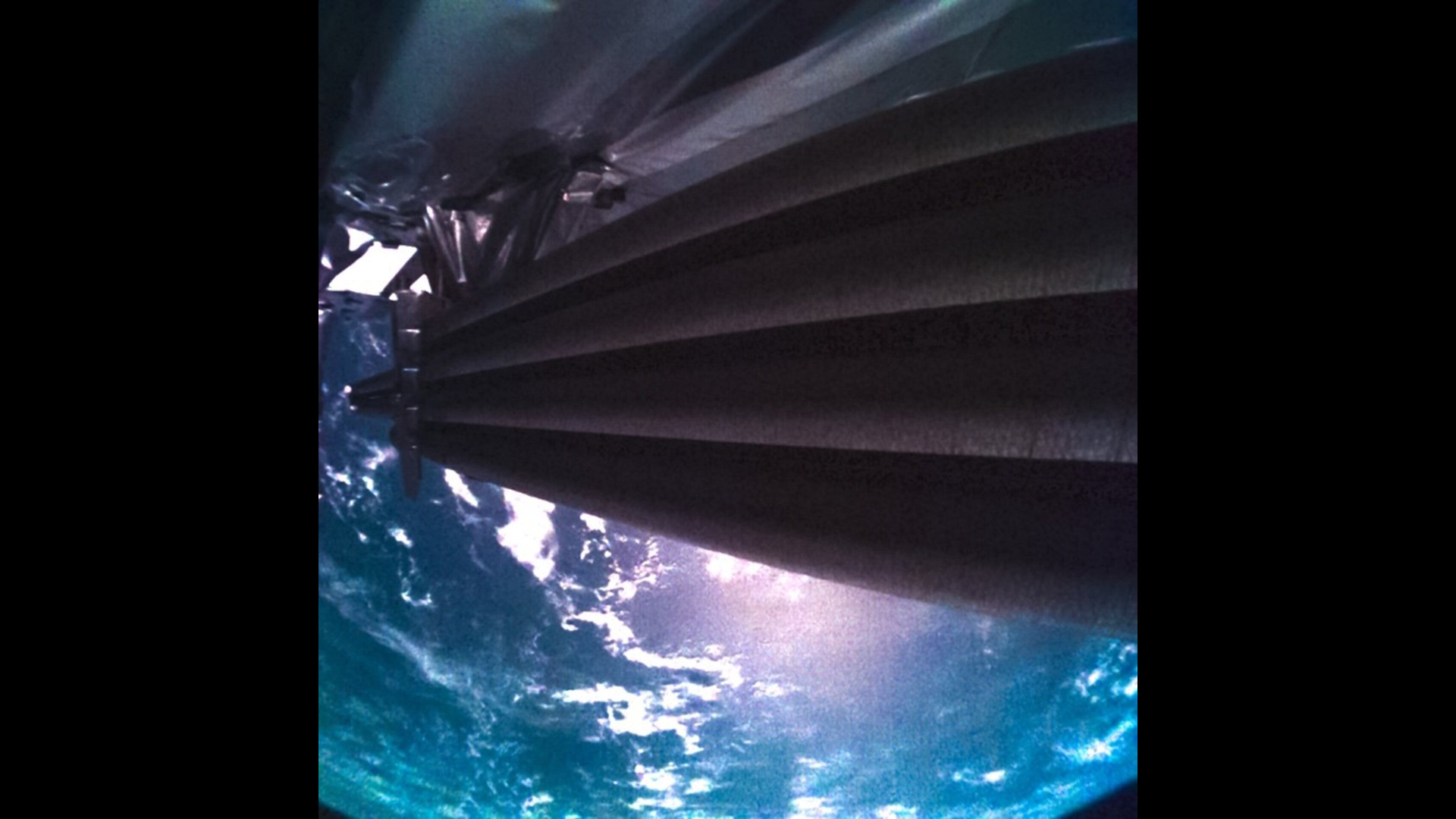Europe's JUICE Jupiter explorer probe takes 1st space 'selfies' on its way to gas giant (photos)
JUICE bids a fond farewell to Earth as it heads out on its first orbit of the sun.

The Jupiter Icy Moons Explorer (JUICE) spacecraft has taken its first "selfies" from space, catching stunning images with Earth as a backdrop.
The images were taken in the hours following the European Space Agency (ESA) spacecraft's departure from the European Spaceport in Kourou, French Guiana, on Friday, April 14 at 8:14 a.m. EDT (1214 GMT). JUICE lifted off atop an Ariane 5 rocket after missing its previous launch window on Thursday, 13 April due to poor weather conditions.
The spacecraft is equipped with several cameras, including two mounted on its body for monitoring the deployment of various JUICE systems, such as the solar wings and antennas. These cameras are responsible for these initial selfies providing 1024 x 1024 pixel snapshots that are then processed with a slight color adjustment.
Related: Europe's Jupiter Icy Moons Explorer is unlikely to find life. Here's why.

At the front of the spacecraft is the JUICE monitoring camera 1 (JMC1) which looks up diagonally to view part of the probe's solar arrays. This field of view will also be able to see the spacecraft's antennas once they are deployed.
Also monitoring deployment for JUICE's ESA operating team is the JUICE monitoring camera 2 (JMC2 ). This camera sits at the top of the spacecraft and will capture images of the 52-foot (16-meter) long Radar for Icy Moons Exploration (RIME) antenna.
The primary mission of RIME, currently stowed and set to unfold in stages over the coming days, will be to probe beneath the icy shells of the Jovian moons Europa, Ganymede and Callisto. This will help researchers investigate the subsurface oceans believed to lurk beneath the icy surfaces of these large moons of Jupiter. The scientists will be looking to see if these moons could possibly have environments that could host life.
Get the Space.com Newsletter
Breaking space news, the latest updates on rocket launches, skywatching events and more!


JUICE also has a scientific camera that the spacecraft will use to take high-resolution images of Jupiter and the icy moons when it reaches the Jovian system in 2031 after its eight-year journey.
The monitoring cameras will be active throughout the JUICE mission, capturing images. This will include JUICE's return to our planet in August 2024 when it will get a gravity assist from the combined Earth-moon system, the first lunar-Earth gravity assist (LEGA) to be performed in the history of spaceflight.
The cameras could also catch some impressive Venus images when JUICE gets a gravity assist from the second planet from the sun in 2025. Earth will get another visit from JUICE in 2026 when it gets its final gravity assist to direct it toward Jupiter's orbit.
That means that space enthusiasts can look forward to incredible JUICE images for years to come.
Follow us on Twitter @Spacedotcom or on Facebook.
Join our Space Forums to keep talking space on the latest missions, night sky and more! And if you have a news tip, correction or comment, let us know at: community@space.com.

Robert Lea is a science journalist in the U.K. whose articles have been published in Physics World, New Scientist, Astronomy Magazine, All About Space, Newsweek and ZME Science. He also writes about science communication for Elsevier and the European Journal of Physics. Rob holds a bachelor of science degree in physics and astronomy from the U.K.’s Open University. Follow him on Twitter @sciencef1rst.
-
p3orion These names are getting damned ridiculous. Seriously, you justify JUICE with "JUpiter ICy moons Explorer" ? The acronym would properly be "JIME", and there would be nothing wrong with that. I applaud the skills and ingenuity of those who are leading the exploration of our solar system and beyond, but in recent years, they tend to think of a catchy name, and then take the square peg of an actual mission description and beat it with a hammer until it fits the round hole of the acronym they started with. "Steely-Eyed Missile Men" just ain't what they used to be...Reply









